“People are trapped in history, and history is trapped in them.”
A question that anti-Gorkha elements have always triggered to counter Gorkha’s claim on Siliguri since the time of Left Front is, why should Siliguri be in Gorkhaland when 80 per cent of its population speaks Bengali? I decided not to halt unearthing the answer so easily after coming across an individual who said that this is an invalid claim of the community. To arrive at a proper conclusion, the most important of all the aspects would be to consider economy, demography and history.
The proposed Gorkhaland spreads over an area of 7500 sq km. Gorkhas constitute 35 per cent of the population followed by Rajbangshis – 25 per cent and Adivasis – 20 per cent.
Economy
The Gorkhaland agitation of 2017 was a litmus test for Siliguri and as expected it couldn’t withstand the colour that changed for the worst. While Hills witnessed shutdown, Siliguri faced an economic strike.
Federation of Chamber of Commerce and Industry, North Bengal (FOCIN), Siliguri Merchants’ Association (SMA) and Siliguri Hardware Merchants’ Association (SHMA) reported that indefinite bandh badly sapped their business.
“Siliguri’s business is losing about Rs 2 crore daily. About 75% of business in Siliguri is dependent on Sikkim and Darjeeling hills. As everything is shut in Darjeeling hills, Siliguri is suffering a crippling effect. If this continues everything would collapse,” Biswajit Das, general secretary of FOCIN told Hindustan Times.
According to SMA, from wholesale and retail to food business including vegetable and fish market faced a daily shortfall of 65%. SMA estimated Siliguri was losing the business of 15 crores daily. Shopkeepers expressed their grief about how they sat idle for months without any work.
Clearly, Siliguri has no meaning without Darjeeling-Sikkim. It needs them to sustain and flourish.
Demography
Today Siliguri metropolitan region has a population of nearly 10 lakhs which was prior 1971 thinner than hills. The region has witnessed huge refugee resettlement. Nonetheless, indigenous Gorkhas, Adivasis, Koch-Rajbangshis, Toto, Meche, Rabhas share an overwhelming population in Darjeeling Terai.
According to the 2011 census, there are around 10 lakh (55 per cent) Nepali speakers in Darjeeling district, Kalimpong combined. In addition, with 20-40 per cent of the populace, Gorkhas are too important in 13 assembly seats in the foothills and form majority in seats like Kalchini of Duars.
The GATA (Gorkhaland Adivasi Territorial Administration) Pact of 2013, signed between GJM and Adivasi leader John Barla – the present ruling MP of Alipurduar, was a significant breakthrough. In 2017, Adivasis and Rajbangshis equally voiced the demand of Gorkhaland at Delhi, marital ties and mutual respect for each other’s language, culture and traditions are set of events that have aided the statehood demand to evolve inclusive with time.
Presently Siliguri and adjoining Terai is brimming with the non-native population. The recently passed CAB considers their non-ethnic stature. Therefore, non-indigenous procure no right to oppose the century-old demand of Gorkhaland that has a legitimate claim on Terai and Duars.
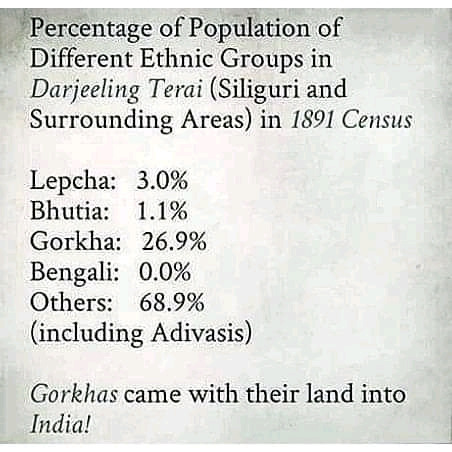
History
Siliguri in Bengali literally translates from Silagadi. It comes from two Nepali words – ‘sila’ meaning pebbles and ‘Gadi’ meaning embedded. The land feature shaped by the rivers accordingly suggested the name. Gorkhas prefer to call it Silgadi.
Darjeeling Terai was a disputed area between the Kingdom of Nepal, Sikkim and Bhutan and British India. The first report of Nepalis in Bhutan was around 1620 and they were largely concentrated in the southern part of the kingdom. The annexation of Duars in 1864 absorbed the people of Nepali origin to British India. Later the introduction of tea plantations brought Adivasis to the region.
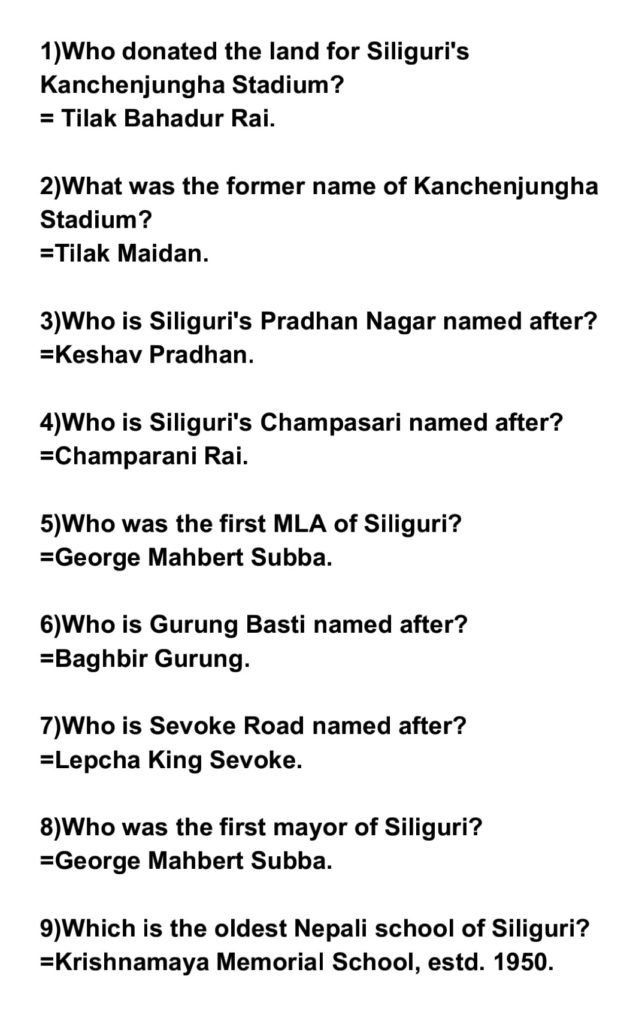
History is a testimony to the fact that past Silgadi has shrunk to the limits of few Gorkha pockets in the city, which were itself settled by founding fathers and much of which has changed now. However, history dares demography into submission.
The region vastly differs from Bengal in all parameters and not just on linguistic ground. Historically, culturally and socially the tribals of the region have no affinity with Bengal. Therefore any linguistic myths garnered by anti-Gorkha elements cannot bash our justified claim on Terai and Duars.
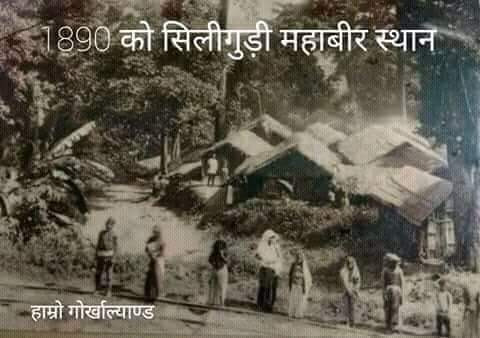
We have always moved with acceptance for the better good and resistance to ill-intentions. Gorkhaland has numerous unforeseen opportunities, we have time and again reiterated all would be equal and all would continue to prosper the same way. Gorkhaland is for all!
Writes: Giri Babu

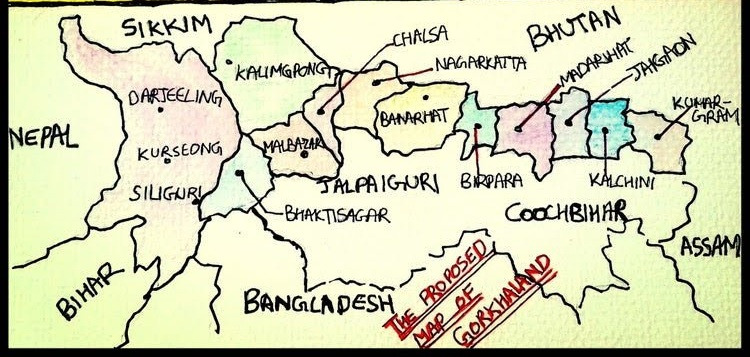



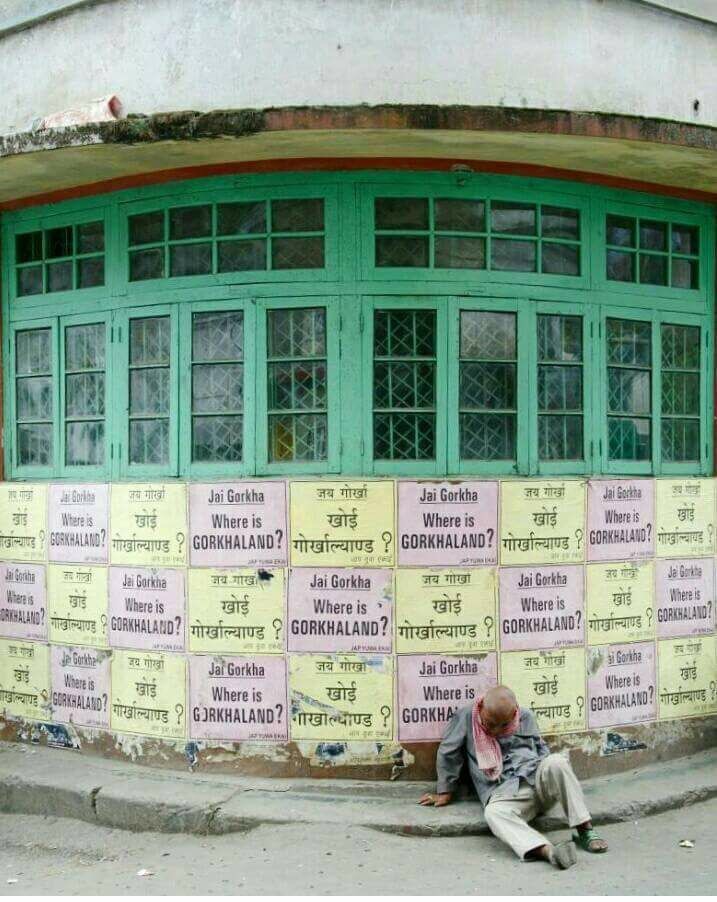
A thorough research work done by the writer is clearly understood. As suggested, why should legal/illegal refugees from Bangladesh come and protest the century old demand of Gorkhaland by indigenous Gorkhas and tribes of Silagadi/Terai/ Duars.